#8 in Vietnam
Bánh Xèo: Basic Information
Pronunciation
Alternative Name(s)
Dish Type
Course
Mealtime
Popular Bánh Xèo Variations

Bánh Khoái
Bánh Xèo: Ingredients and Preparation
Main Ingredients
Main Cooking Method
Preparation Process
Bánh Xèo: A Deep Dive
Cultural Significance
Taste
Texture
Aroma
Color
Serving Style
- Eaten by hand or with chopsticks
- Rolling the pancake around vegetables and dipping it in the sauce
Serving Temperature
Accompaniment
- Vegetables: mustard greens, Romaine lettuce, lettuce, fíh mint, beefsteak plant, lemon basil, spearmint, young mango leaves, julienne-cut mangoes, etc.
- Dipping sauce: Vietnamese dipping sauce, pâté-based sauce, peanut sauce
- Others: Rice paper wrappers
Occasions
Seasons
Special Diets
Calories
Popularity
Popular Similar Dishes
- Khanom Bueang Yuan
- Bánh Căn
- Bánh Khọt
- Appam
- Bindae-Tteok
- Okonomiyaki
- Crêpe
- Taco
- Jianbing
- Roti Canai
- Buchimgae
Popular Dining Area
Bánh xèo, also known as Vietnamese crepes, is a traditional stuffed pancake dish popular throughout Vietnam. It is usually stuffed with pork, prawns, and bean sprouts, but many regional versions may incorporate different ingredients.
Common accompaniments for bánh xèo are fresh vegetables and nước chấm (sweet and sour dipping sauce). Locals usually enjoy bánh xèo whole or folded in half, eating it with their fingers or using chopsticks to pick up the pancake.
Sometimes, the pancake can be rolled around the vegetables and dipped in the sauce. Bánh xèo can be eaten in both ways as a street food or for a full meal.
Bánh xèo is sometimes confused with bánh khoái, which is a Central Vietnamese bánh xèo variant served with a special pâté-based sauce.
Over its long history, bánh xèo has inspired similar pancake dishes in Cambodia and Thailand.
There are many more engaging facts I want to tell you about bánh xèo, such as its origin, main ingredients, and distinctions between bánh xèo in different regions of Vietnam.
I will also delve into the advantages and disadvantages of eating this pancake dish, cover frequently asked questions about it, and suggest similar dishes.
Key Points
Bánh Xèo Images
What Is the Origin of Bánh Xèo?
There are many theories about the origin of bánh xèo. The most popular one says that the Khmer community in Southern Vietnam created it. Another one says that bánh xèo originated in Central Vietnam, whereas many people speculate it is a Vietnamese interpretation of French crepes dating back to colonial times.
Bánh xèo literally means “sizzling pancake” due to the sound created when the batter is added to the hot skillet. Other than the rice batter, there are many other ingredients in this pancake dish.
What Is the Origin of Bánh Xèo?
| Ingredients | Description |
|---|---|
| Rice batter | Common ingredients: Rice flour, water, turmeric powder Optional ingredients: Coconut milk |
| Toppings | Common options: Sliced pork belly, prawns, bean sprouts Additional options: Seafood (fish, scallops, squids, etc.), mushrooms (straw mushrooms or enoki mushrooms), tofu, mung beans, taro, jicama |
| Fresh vegetables | Common options: Mustard greens, Romaine lettuce, lettuce, fíh mint, beefsteak plant, lemon basil, spearmint, cucumbers, etc. Additional options: Young mango leaves, julienne-cut mangoes, sliced star fruits, elephant ear fig (Ficus auriculata) fruits, etc. |
| Dipping sauce | Common options: Nước chấm made from Vietnamese fish sauce, garlic, chili peppers, lime juice, julienne-cut carrots (optional) Additional options: Pâté-based dipping sauce, peanut sauce |
The use of distinct ingredients is one of the most significant differences between bánh xèo in Southern, Central, and Northern Vietnam, but there are many other distinctions worth considering.
What Are the Differences Between Bánh Xèo Throughout Vietnam?
Bánh xèo versions from the southern, central, and northern regions of Vietnam stand out from one another in the following 5 aspects: size, main ingredients, color, accompaniments, and popularity.
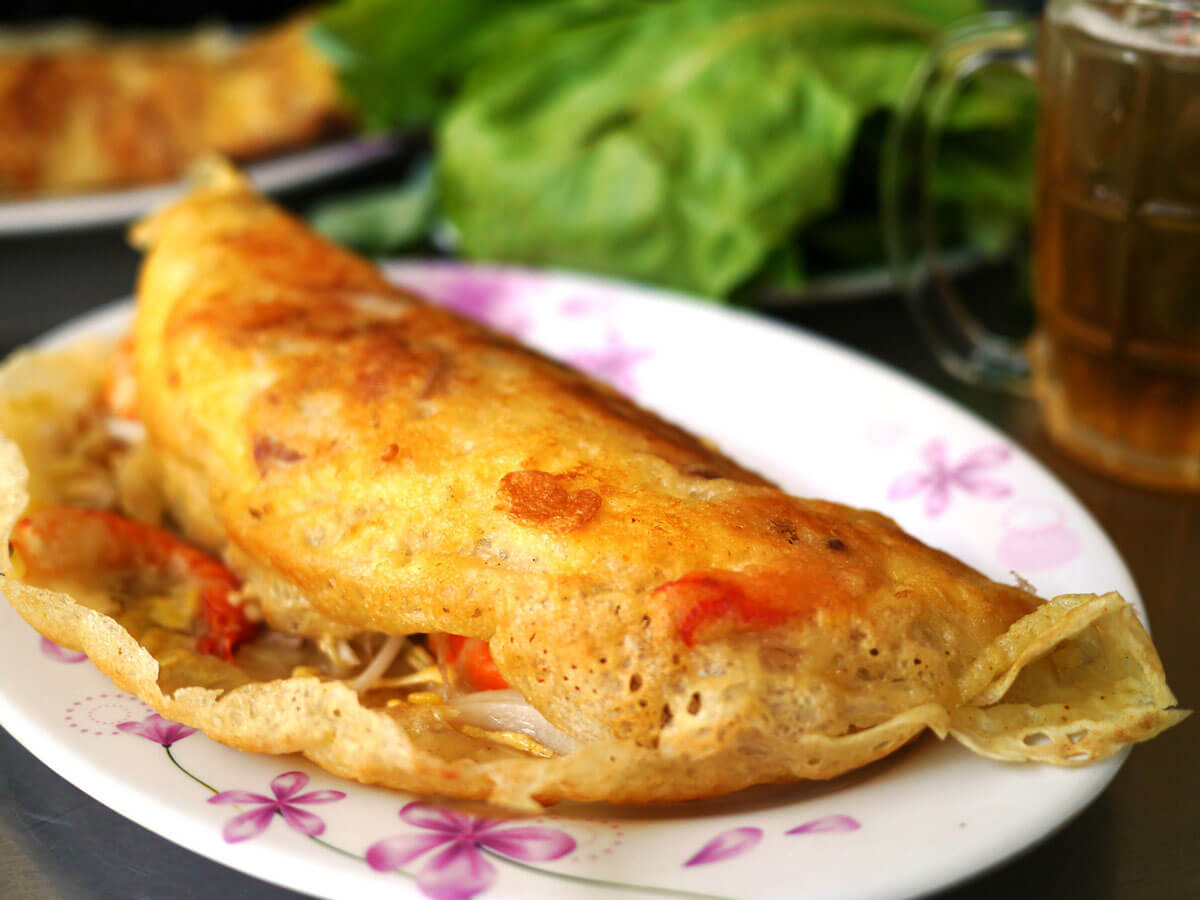
Southern Vietnam
Size:
8-12 inches (20-30 centimeters) in diameter
Main ingredients:
Rice batter: rice flour, coconut milk, eggs, turmeric powder
Toppings: pork, shrimp, duck, bean sprouts, mushrooms, heart of palm, điên điển flowers (Sesbania sesban)
Color:
Golden
Accompaniments:
Sweet and sour Vietnamese dipping sauce
Served with many types of different herbs and vegetables
Usually not served with rice paper wrappers
Popularity:
Extremely popular in the Mekong Delta
A common dish for Tết Đoan ngọ (a festival on the fifth day of the fifth month of the lunar calendar)
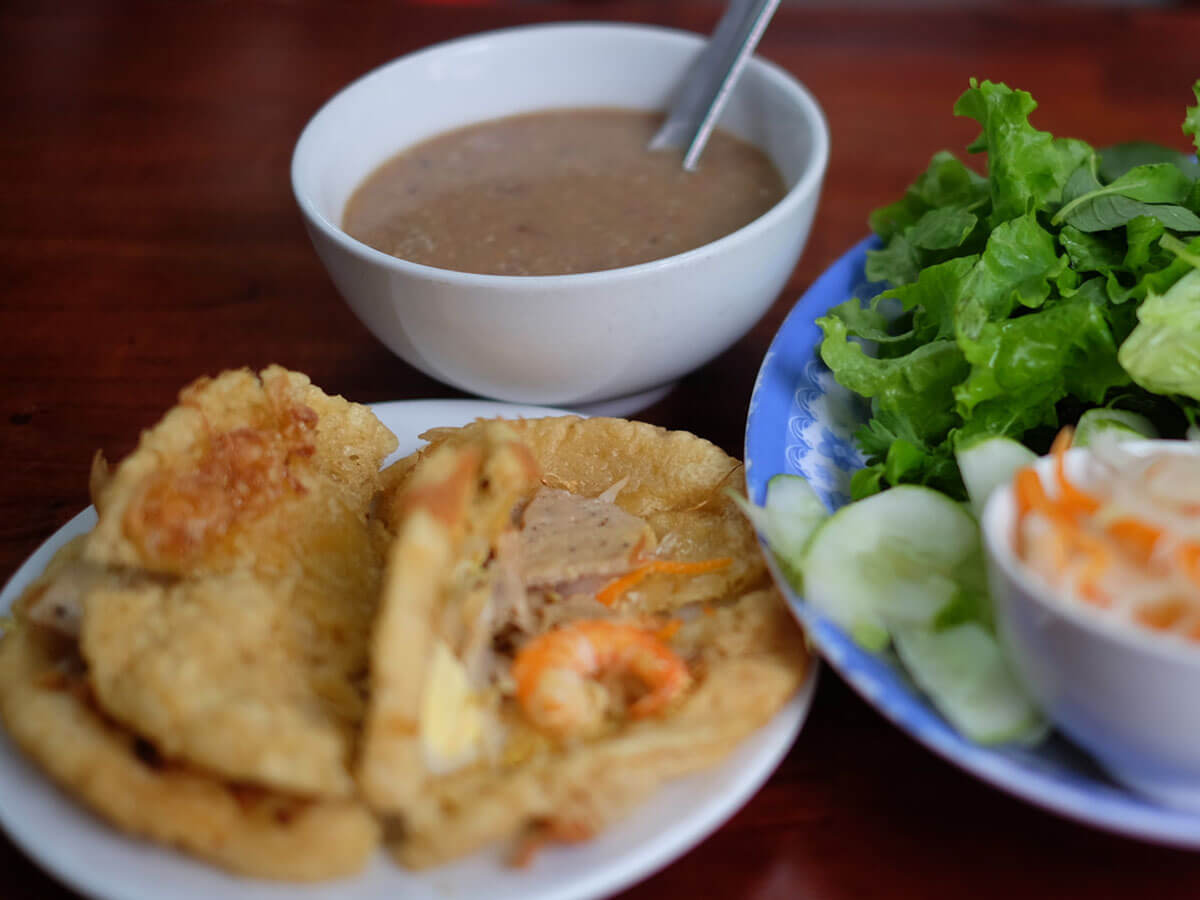
Central Vietnam
Size:
Below 6 inches (15 centimeters) in diameter
Main ingredients:
Rice batter: rice flour and turmeric powder (absent in some versions)
Toppings: pork, shrimp, bean sprouts, seafood
Color:
Off-white (in versions without turmeric powder) or golden
Accompaniments:
Vietnamese dipping sauce or pâté-based sauce made from pork liver
Has relatively less diverse vegetable content than in the south
Can be served with rice paper wrappers
Popularity:
Popular dish sometimes substituted for rice
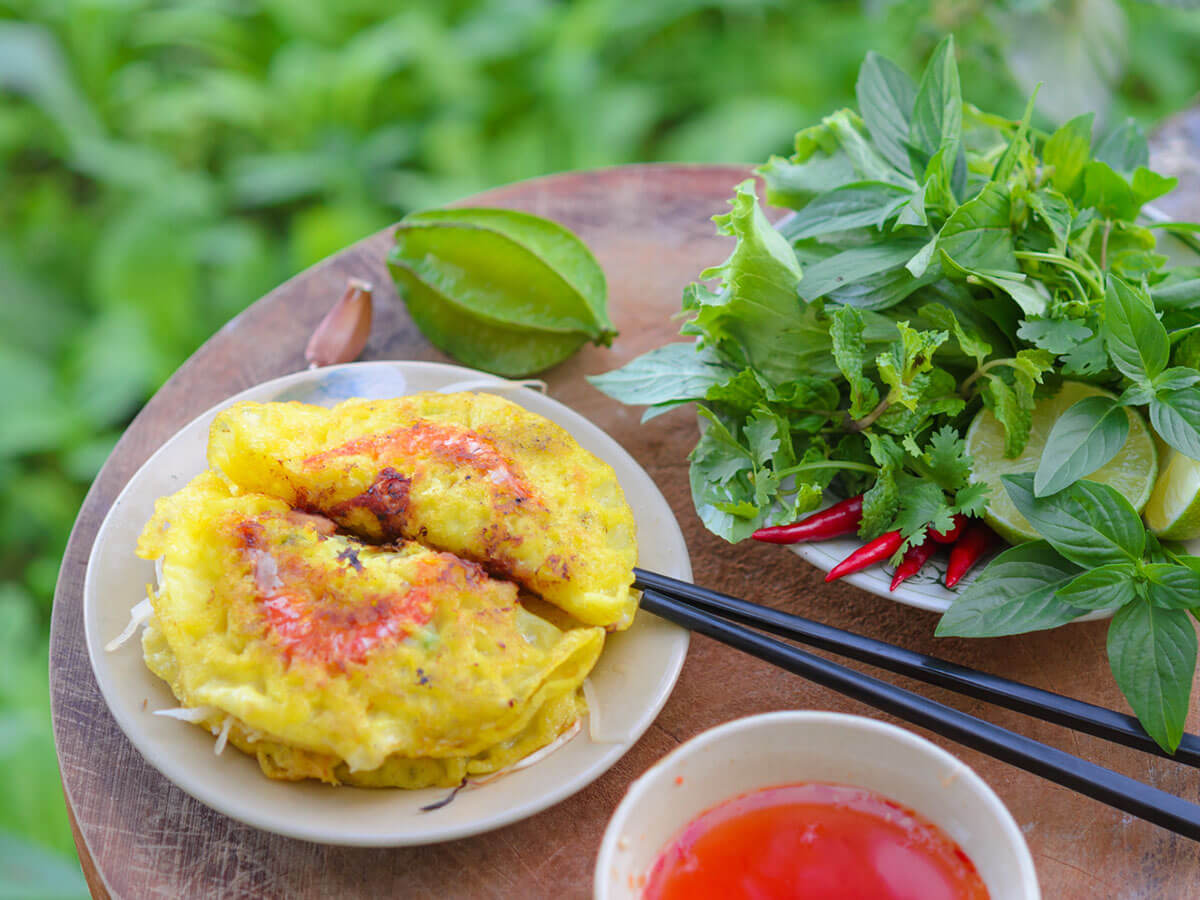
Northern Vietnam
Size:
Usually below 6 inches (15 centimeters) in diameter
Main ingredients:
Rice batter: rice flour and turmeric powder
Toppings: pork, shrimp, bean sprouts, mushrooms
Julienne-cut taro and jicama
Color:
Golden
Accompaniments:
Vietnamese dipping sauce balanced between saltiness, sweetness, and tanginess
Has relatively less diverse vegetable content than in the south
Can be served with rice paper wrappers
Popularity:
Less popular than in other regions
Regardless of where it comes from, bánh xèo always displays the same advantages and disadvantages. Read on to discover them.
Pros and Cons of Eating Bánh Xèo
Bánh xèo has the following benefits and shortcomings.
Pros
Cons
After knowing about these upsides and downsides, why don’t you discover other dimensions of bánh xèo in the FAQs section?



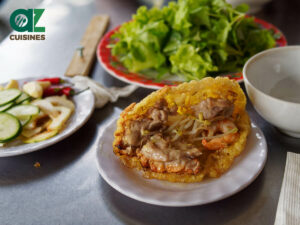

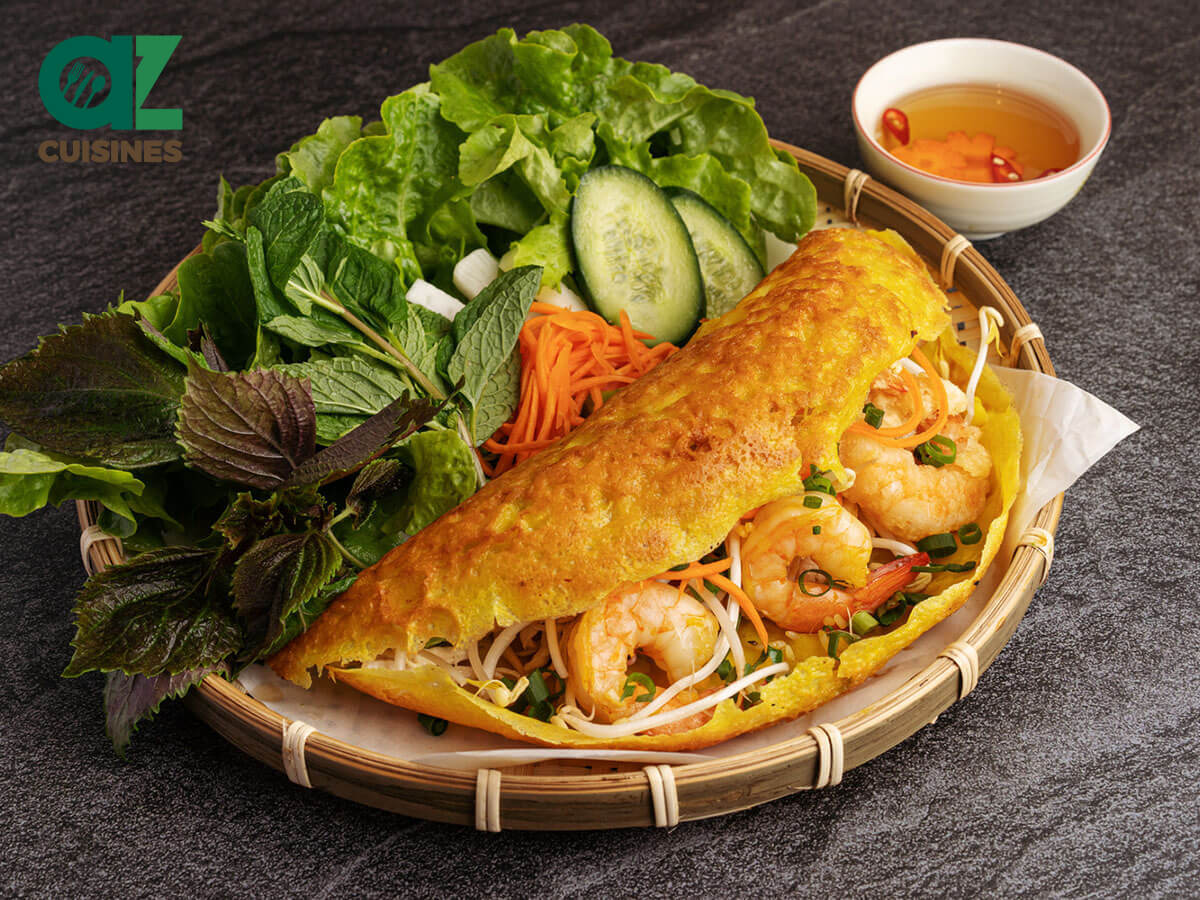
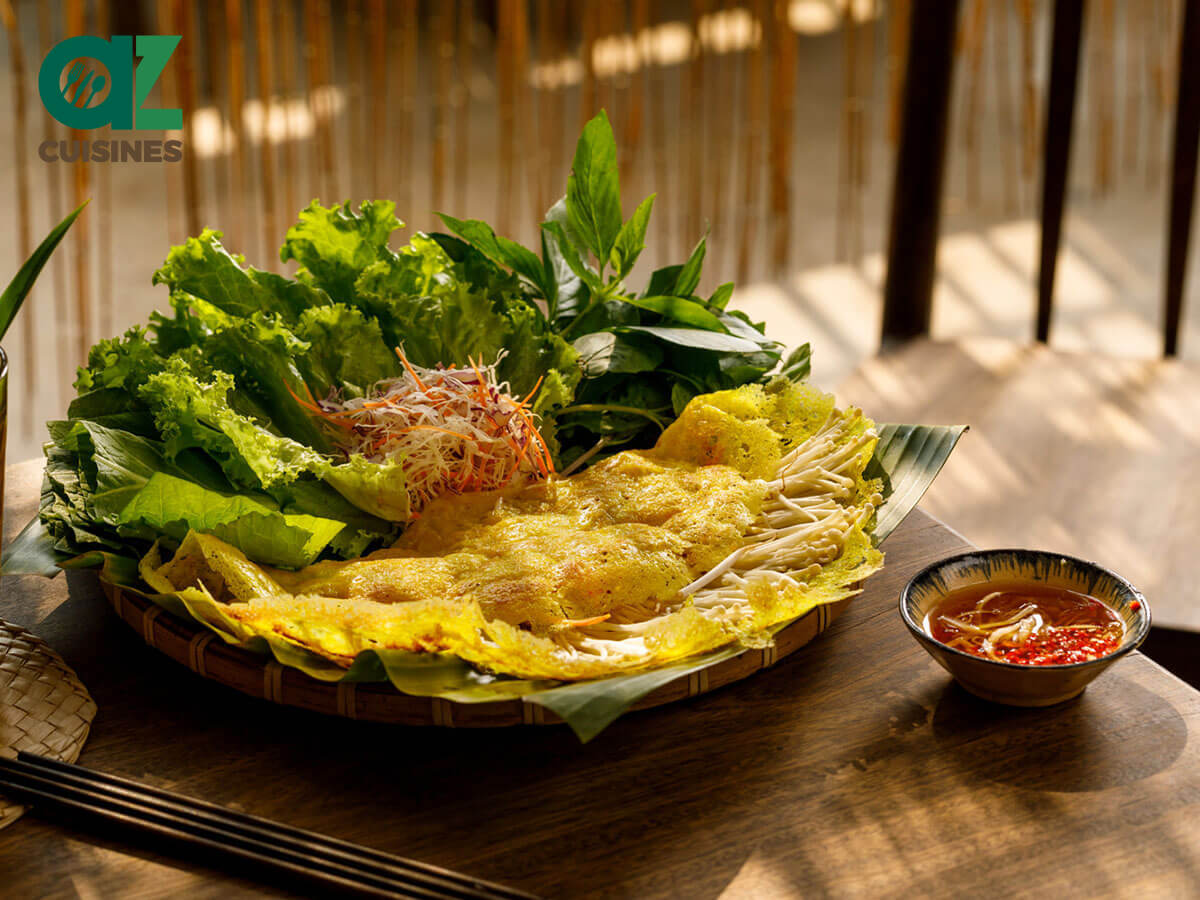


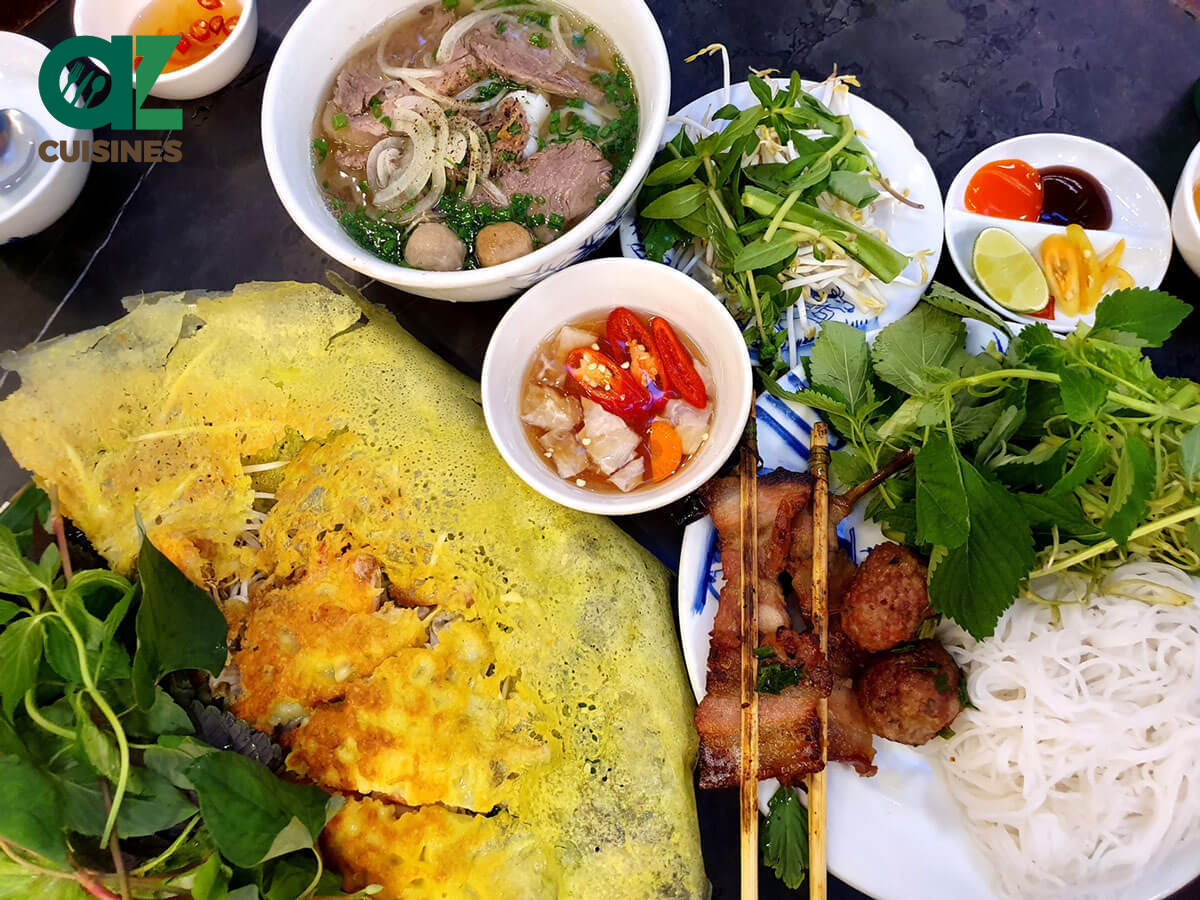
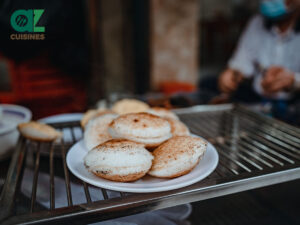
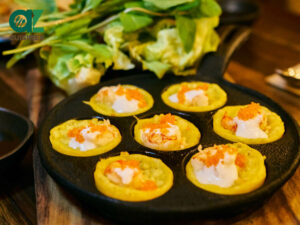
Truc Tran (Kris)
Senior Food Editor
Expertise
Home Cooking, Meal Planning, Recipe Development, Baking and Pastry, Food Editor, Cooking-video Maker, Vietnamese Food Evaluation Expert
Education
Truc Tran (Kris), an experienced food writer and editor, is great at exploring and describing global cuisines, from simple street food to fancy dining. In her writing, she skillfully mixes different flavors, cooking methods, and culinary traditions, showing the unique character of various cultures through their food and drinks. On azcuisines.com, Kris highlights her knowledge, especially in Asian cuisine and worldwide traditional dishes.